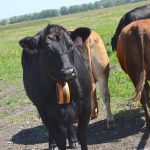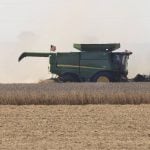Seeding equipment is poised and ready in Alberta’s deep south as farmers await a few more days of warm, windy weather to melt a light weekend snowfall and then dry the soil.
But farmers north of a snow line that divides the province from Red Deer southeast to Acadia Valley are still looking at wintry conditions.
Alberta Agriculture agrometeorology expert Ralph Wright said areas around Edmonton and parts of the Peace River region have snow at depths seen about once every 50 years, while those in Clear Hills County in northwestern Alberta have a one in 25 year snow level.
Read Also

Why feds imposed EV tariffs
Moe and Kinew have a fight on their hands when it comes to eliminating the EV tariff. Canada has to worry about pissing off the U.S. and Mexico and hundreds of thousands of auto workers.
Snow levels south of Red Deer are average to slightly below average.
Many farmers are predicting a late start to seeding as snow lingers.
In the northern Peace, Nick Parsons figures seeding will be delayed until well into May, although he is encouraged by the moisture that heavy snow will offer to a region that has suffered several years of drought.
“We would like a good year,” said Parsons.
In the Oyen region, Marlene Caskey said wet snow on the weekend has added to an already substantial amount.
“We never, ever say anything bad about getting moisture in this corner of the province, but we’ve got enough now to start good seed in the spring,” she said.
“But we’re a good three weeks before we turn a wheel here, at least, and that puts it late for seeding.”
Crop adviser Jim Warren said there are still two metre drifts near Thorsby, and an early spring is unlikely for those farming between there and Viking.
“We won’t be in the fields before May 1,” he said.
He echoed Caskey’s thoughts that acres will be lost to potholes that expand when all the snow melts.
Melting could occur sooner than some expect, said Wright.
His data indicates soil temperatures across a large swath of the province are near zero, insulated by an October snow and kept cozy by a mild winter.
“Throughout most of the province, say north of Red Deer where the big snows are currently still lingering, our weather stations are showing that soil temperatures are pretty close to the zero mark,” he said.
“That means that hopefully a lot of this snow, more than usual, will soak into the ground.”
River forecast engineer David Watson of Alberta Environment said mountain snow pack levels are average and do not point to flood risk at this stage.
Some overland flooding is possible due to higher snow levels on the plains, but that will depend on the rate of melt, soil temperatures and other spring precipitation.















